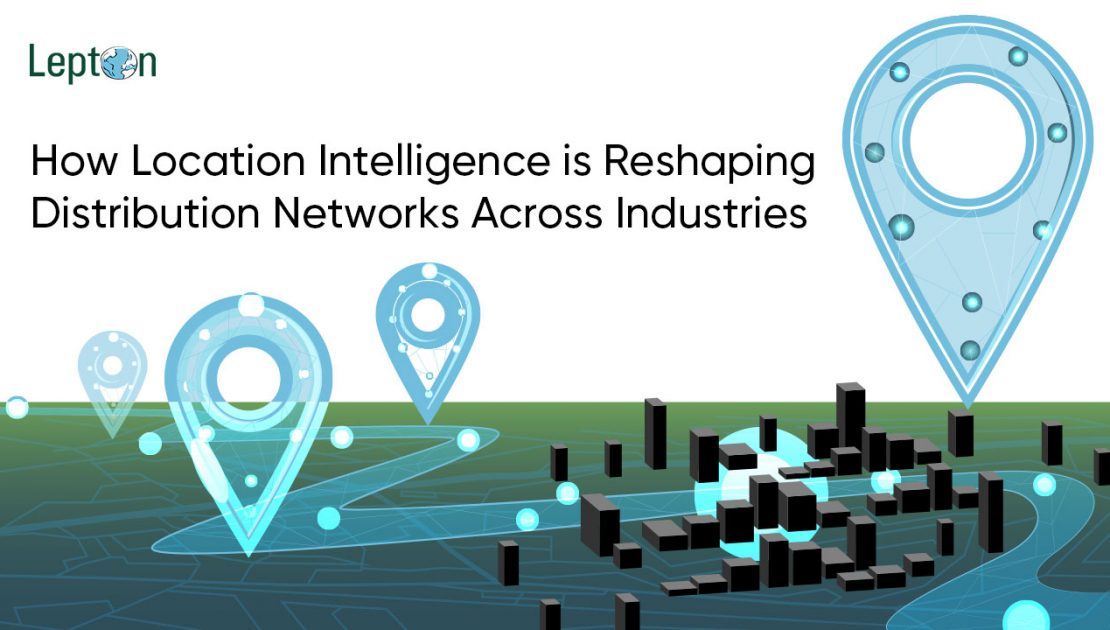In today’s hyperconnected and customer-driven world, distribution networks have become more complex than ever. With rising expectations for speed, accuracy, and flexibility, businesses across sectors are reevaluating their supply chains to stay competitive. The key enabler in this transformation is Location Intelligence.
By integrating geospatial analytics with business operations, Location Intelligence is helping companies rethink everything—from distribution network design to last mile delivery optimization. But understanding what lies at the core of this Location Intelligence to utilize it to its full capacity is the first and most crucial step.
What is Location Intelligence?
At its core, Location Intelligence involves leveraging geographic and spatial data to drive smarter, more informed business decisions. For supply chain and logistics leaders, this means using location data to visualize operations, optimize processes, and unlock growth in ways that were previously unattainable.
1. Supply Chain Optimization
Supply chain optimization today isn’t just about reducing cost—it’s about improving service levels, agility, and responsiveness. Location Intelligence supports this by enabling businesses to analyze infrastructure, demand zones, road networks, and environmental conditions in real-time, helping design more efficient, responsive, and scalable supply chains.
2. Distribution Network Design
Choosing the right warehouse or distribution center location is no longer a guessing game. With Location Intelligence, businesses can model distribution network design based on demand heatmaps, delivery timelines, population clusters, and competitor footprints. This ensures strategic placement of facilities for maximum coverage and efficiency.
3. Logistics Optimization and Route Planning
Fuel costs, traffic delays, and inefficient routing can severely erode margins. Route optimization powered by Location Intelligence considers live traffic conditions, road types, delivery windows, and vehicle constraints to reduce travel time and costs. This is a critical element of broader logistics optimization, ensuring that goods move faster, smoother, and more cost-effectively.
4. Inventory Management at a Hyperlocal Level
Traditional inventory management is reactive and disconnected. With the help of Location Intelligence, companies can forecast demand by location and season, helping ensure that the right products are stocked at the right place and time. This reduces stockouts, minimizes carrying costs, and boosts service levels across the board.
5. Supply Chain Visibility
Supply chain visibility is essential in the face of global disruptions. Location Intelligence platforms provide real-time, map-based dashboards showing the movement of goods, performance of suppliers, and status of critical assets. This transparency enhances control, accountability, and operational readiness.
6. Supply Chain Analytics and Risk Management
Advanced supply chain analytics combined with geospatial intelligence allow companies to proactively assess risks—such as natural disasters, political unrest, or transportation bottlenecks. This strengthens supply chain risk management, enabling pre-emptive action like rerouting shipments or shifting inventory to alternative hubs.
7. Last Mile Delivery Optimization
The last mile is often the most expensive and complex part of the supply chain. Last mile delivery optimization through Location Intelligence allows businesses to group deliveries, improve ETAs, and reduce failed delivery attempts. For QSRs, e-commerce, and urban logistics players, this translates to faster deliveries, reduced costs, and happier customers.
Join our upcoming webinar to dive deeper into how Location Intelligence is driving smarter, more efficient distribution networks across industries
Cross-Industry Applications of Location Intelligence
- Retail & FMCG: Strategic site selection, route-to-market optimization, and hyperlocal marketing.
- Healthcare & Pharma: Cold chain tracking, facility placement, and emergency supply routing.
- Telecom: Network rollout planning, infrastructure monitoring, and service coverage visualization
- BFSI: Branch optimization, field force deployment, and territory planning.
- Logistics & E-commerce: Fleet management, warehouse network optimization, and SLA compliance
Conclusion: Precision is the New Competitive Advantage
As the demands on supply chains grow more intense, Location Intelligence has emerged as the competitive differentiator for businesses looking to scale efficiently and sustainably. From inventory management and route optimization to supply chain visibility and risk management, spatial intelligence is powering the next generation of resilient, responsive, and intelligent distribution networks.
In a world where every minute and mile counts, knowing where to act can determine how well you perform.

